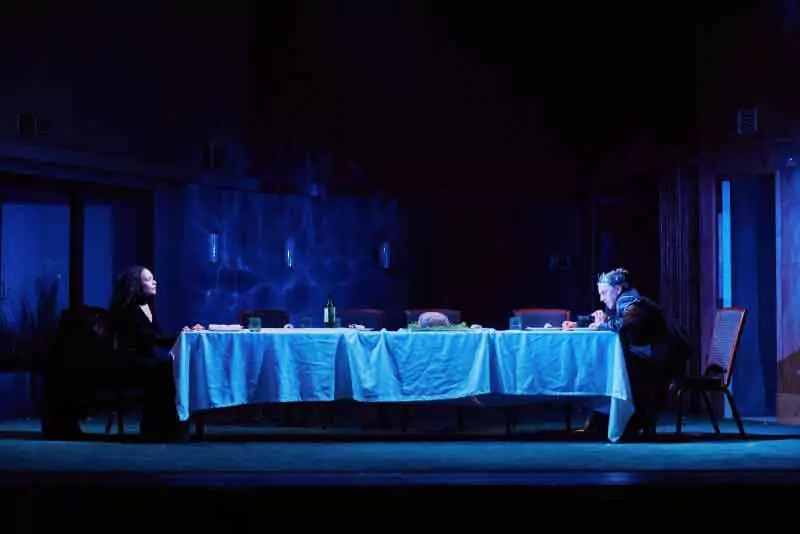A Mid-Century Modern Macbeth: Review
Richard Twyman’s adaptation of Macbeth at the Lyric Hammersmith has left me feeling rather curious. I now ask myself the question: “did it work, or was it just good acting?”. Whilst the set is stunning: a floor to ceiling construction of a mid-century urban mansion. Dark oak panels, a full kitchen and mystifying details such as working shower, giant mirror and disco ball, each having their place in the story, feature prominently and leave a resounding impression in my mind. There are many choices I agreed with. One of which being possibly the most striking addition: the element of live video recordings. Some made to look like security camera footage, some streaming directly from an actor’s video camera on stage, some playing the role of Banquo’s ghost. Because the three witches were not exactly played by a member of the cast, I interpreted this to be a representation of the pressure Macbeth felt from the witches’ prophecies and their omniscient nature, ultimately leading him and his wife to feel constantly surveilled and unable to escape their fate.
The fourth-wall is foggy in this play. It’s often broken, at times in clever and visually impressive manners, such as the live video recordings which of course, meant that the wings, the audience, the microphones, were all displayed and equally balanced alongside Macbeth himself. This idea is only elevated, as, in Act 2, the entire back wall of Macbeth’s living room is removed, exposing the classic black-painted brick, light switches and wall fixtures of the Lyric Hammersmith itself. Backstage, auditorium and stage presented as harmonious equals. This bareness and vulnerability was so unique and exposing, allowing the audience to really immerse themselves in Macbeth’s tyrannous downfall. However, this immersion is pushed slightly too far. Features such as unabashed direct address which actually removed all sense character out of Alex Austin (Macbeth), and, horror of all horror, bringing two audience members on stage for one of the most iconic scenes, only to do nothing with them. My friend offered some lovely analysis about this, arguing that the audience became complicit in both Macbeth’s tyranny and his psychotic breakdown, although this moment was entirely undeserving of such commentary.
And whilst, some comment must be said about the interpretation of heart of the play itself: emotional torment between husband and wife, the focus of the play was largely on Macbeth. Despite Lois Chimimba's (Lady Macbeth) stirring and actually quite terrifying performance, there was little to grasp in terms of how it affected Macbeth and I was hoping for more when her suicide came to be announced.
Generally, this production was unbalanced in that some beautiful and visually stirring ideas were forcefully placed against embarrassingly cheap additions, which weakened the piece as a whole but did leave a unique taste in my mouth.


Comments
Post a Comment